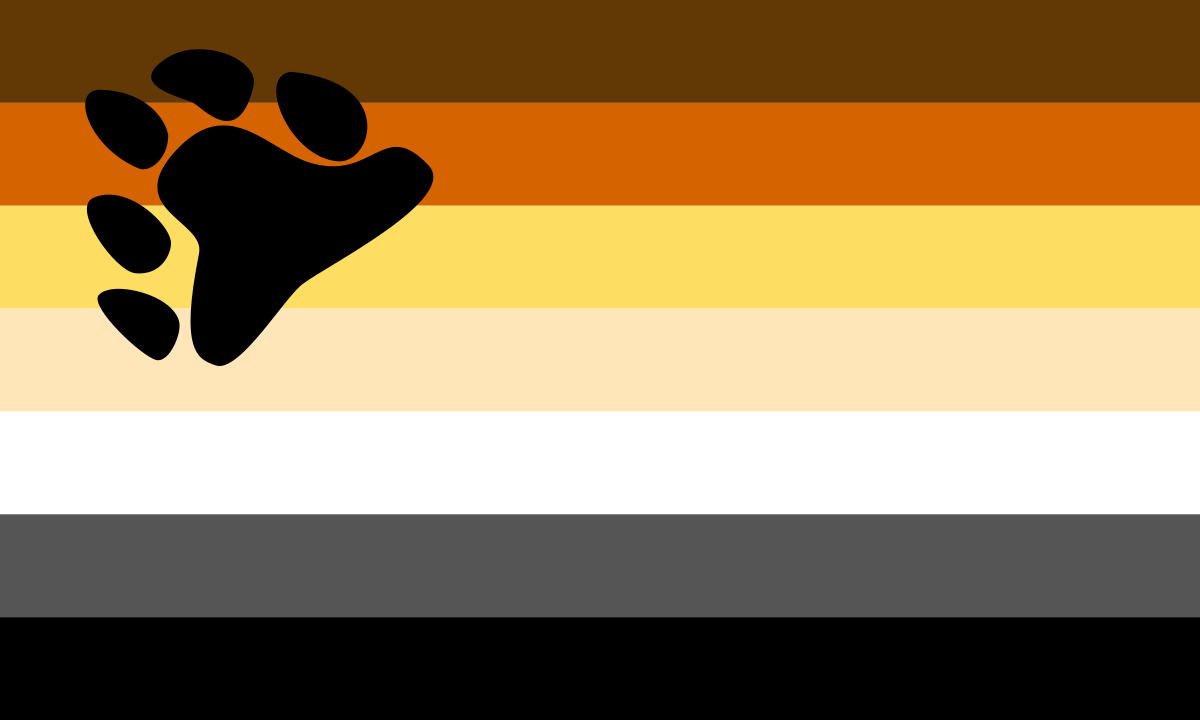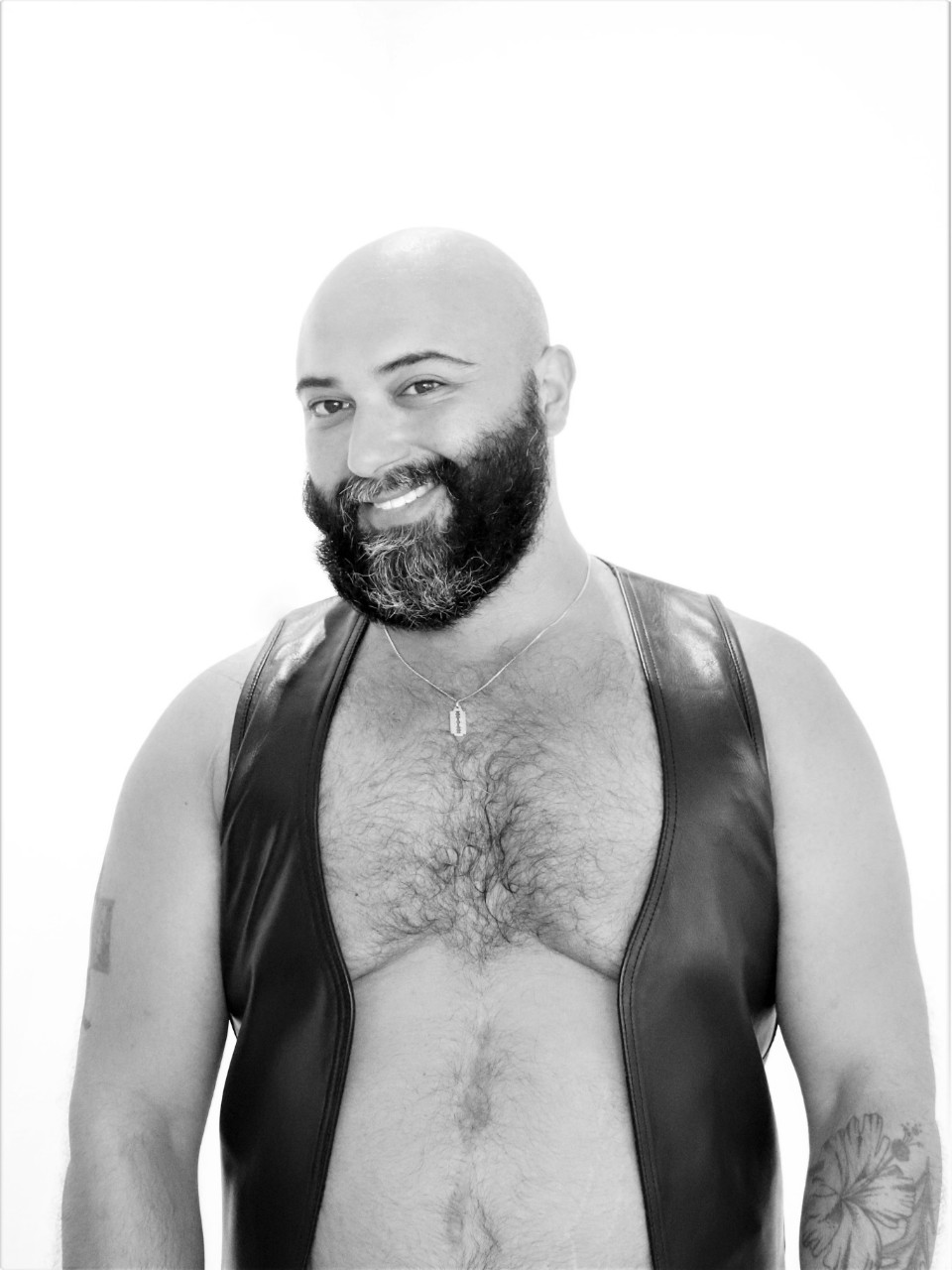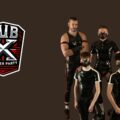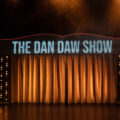
Originally this was going to be a Party Report of Sitges Bear Week 2019. I was already at the event and having an amazing time when I was asked to write the review and I thought, sure, that sounds easy and fun until I got home and tried to write. I was stuck. As I started I felt like it was becoming less of a party review and more of a critique of the gay community (#sigh). I just wasn’t able to write a review of this event without talking about the harsh reality of body politics surrounding it. You can’t blame me, this event is literally about a gay-subculture based on body type, it’s unavoidable. Though the bear label may mean something different to everyone, it is always about our bodies.
Bear events are meant to bring bears together, for the sake of both bears and admirers, celebrating a particular body type that has typically been rejected by mainstream gay culture. The bear flag even displays a variety of shades to represent the inclusivity of the sub-culture. Bear culture started in the late 1970s as a counter-movement to the gay liberation period, where gay men’s image and representation was both public and somewhat accepted, but also known as valuing a particular standard of attractiveness and having a feminine expression. The group maintained the image of a particular gay man, based on an archetype of a working-class man who is older, straight (seeming), large, and hairy. It eventually expanded into a more inclusive concept consisting of larger-bodied men, chubs, daddies, cubs, otters (not big, but hairy men) and the label also includes specifically non-white men as well, namely black bears, brown bears, and panda bears. The bear community and bear events evolved into a safe space for many fat guys, chubs, chunky boys, huskies, big guys, and all the other bodies that have felt unattractive or invisible in most other gay spaces.
I don’t think any of you would argue that gay culture and media idealize a particular body type. As we have seen over the years in gay media, mainstream media, gay-porn, gay party and event advertisements, gay clothing ads and pretty much almost all gay business and cultural pieces, a certain body that is celebrated. It has historically been a hairless, lean or muscular, mostly white, cisgender (non-trans), 25 to 35-year-old guy with traditionally attractive features and no body fat. Currently we are seeing things like beards and body hair grow in popularity, covering the once smooth and hairless bodies and faces of these men, but still, they are typically lean and or muscular. And this is the body we have seen over and over again as being valued. So it’s safe to say that if your body doesn’t look like this (and even if it does) you may be left feeling bad about it. We learn lessons from a very young age about what is and is not deemed as valuable by society and the hard and obvious lesson someone with a fat body learns is that their body is not. This is perpetuated by diet crazes, fat jokes in mainstream media, and when we see body shaming on apps like Grindr or Scruff such as the ever-so-popular ‘no fats, no femmes, no Asians’, ‘no skinnies’, or simply ‘looking for lean or muscle only’. Though these men who write such things in their profiles think they are simply sharing their preferences, they are essentially shaming an already marginalized group with an already devalued body type. We tend to see these messages in others’ profiles and interpret them as being directed towards us. It is no surprise then that body image issues within the gay, bi, queer, trans, and MSM community are common. In fact, it’s a serious problem for gay men, with significant implications for both one’s mental and physical health. Gay and bi men have disproportionately high rates of eating disorders, and steroid use. Sadly, even gay and bi teens are reporting higher rates of eating disorders and steroid use, much more than straight boys of the same age. Men are suffering and going to great lengths to change their bodies with dangerous methods like extreme diet and exercise regimes and steroid use in order to help them feel more attractive, valuable. There is clearly a problem here.
And this brings us back to our bears, the guys who bear the brunt of the body image beast within the greater gay community. Coming together to make spaces where we can be fat or chubby and not feel bad about it. Finally, a community that is accepting and welcoming of bigger bodies and bellies. Sounds great, right? But there’s a catch. What has been happening now within the bear community is a derivative effect of what’s been happening for years within the larger gay community. Men are being excluded because of their bodies. Too thin, too fat, not hairy enough and simply not good enough, many men left Sitges Bear Week feeling bad about their bodies. After asking a number of different men what they thought of the event, I could conclude that the ones who had the most positive responses were the ones who look like they can be on the poster for the event. I know many guys who said it was a cliquey event, difficult to penetrate the bear-only social groups and others who left feeling bad about their bodies. I have friends who are chasers (non-bears who like bears), thinner or leaner guys who hated their time in Sitges because they felt invisible, lusting after men who were lusting after others, mainly other bears. I spoke to chubby guys who felt unattractive because of their lack of muscles, or guys without a beard who noted it as something shameful. Some men felt like failures because they compared themselves to the muscle bears who seem confident in their appearance, parading their nude bodies on the beach, looking like poster boys and porn stars (some of them may have actually been poster boys and porn stars). This is because the most celebrated body of the bunch is the muscle bear. There are a lot of guys who like bigger, chubbier guys too, but the muscle bear is the king of this forest. The guys in most of the ads for bear events will almost always have an excess of muscles. Big, strong and hairy – the bear prototype that all bears measure themselves up against. The same thing that was happening outside the bear community is happening inside – there is an ideal body type and all others are deemed as less valuable compared to it. The muscleman has risen to the top of the attractiveness hierarchy within the bear scene and he likely isn’t going away any time soon.




But is this poster-bear who is now hairy, bearded, and very muscular representative of reality or just an idealized hyper-masculine compensation of a failed gender? Are muscles simply one of the fastest way for gay men to gain masculinity points? For a group whose masculinity is inherently questionable in comparison to straight men, it’s advantageous to develop an image that both protects us from being targeted as gay, weak, or feminine, and also protects us from feeling not good enough, gay, weak, or feminine. We end up measuring ourselves and others against these homophobic, misogynistic and impossible attainments.
So fellow bears, what do we do? What do we do about our brothers who are suffering because they are, once again, not good enough just by simply being who they are? For those of us who are able to, we should help. We should help others by not shaming, by calling it out when we see or hear it, and by challenging the current ideals of attractiveness and masculinity. We should let our friends know that they are good enough the way they are when we hear them say otherwise. And we should know that when we help others, no matter what they or we look like, we are the smart ones because we aren’t getting caught in the bear trap.

Frank is a fat, gay, queer, slutty, loud-mouth, Italian-Canadian, queer rights advocate who moved to Amsterdam in 2018 to complete his degree in Sociology and Sexual Diversity Studies at the UvA. For fun, he enjoys writing, making his friends laugh, and singing poorly at karaoke. On weekends you can find him working in our Amsterdam shop!








